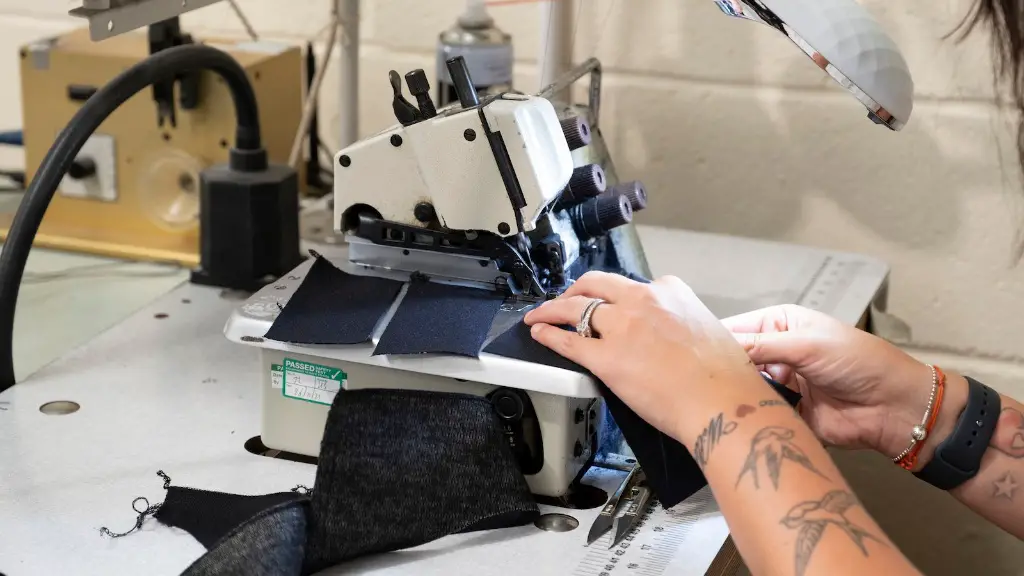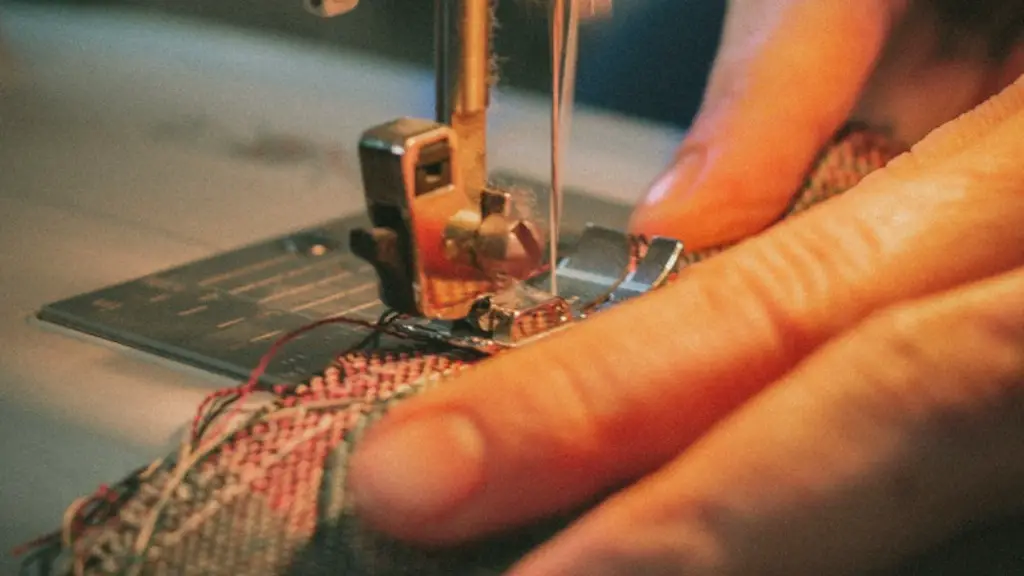Can You Use a Regular Sewing Machine for Upholstery?
Upholstery is a craft that has been practiced for centuries, famously used in making furniture look more inviting. The craft utilizes fabrics and other materials to provide a comfortable soft cushioning over furniture. Traditionally, upholstering was a manual task done with a needle and thread by experienced artisans. However, with the invention of the sewing machine, it is no longer labor-intensive and is done more quickly and with more accuracy than before. But is it possible to use regular sewing machines on upholstery?
Generally, the answer to this question is yes, as long as your regular sewing machine can handle the challenge of heavy fabric. If your sewing machine is not suitable for a heavy fabric like upholstery, you should consider investing in a professional sewing machine that is specially designed for this type of sewing. Professional sewing machines have a range of features designed specifically for upholstery that make the process easier and the results more professional.
Nevertheless, many experts agree that there are some important points to consider when using a regular sewing machine on upholstery. To begin with, it is important to check the type of needle and thread you are using. When upholstering, you need to use heavy-duty thread and a suitable needle for the task. Without these two items, your upholstery project may not look as neat and professional as you would like.
It is also important to ensure that you are using the right type of fabric for upholstery. Upholstery fabric should be thick and durable, so that it can stand up to daily wear and tear. You need to make sure that you have the correct type of fabric before you start your project. If you’re not sure which fabric is right for upholstery, you can consult an expert upholsterer to get an opinion.
It is also important to ensure that your regular sewing machine is set up for proper tension. A good indication of the right tension for upholstery can be determined by checking the manufacturer’s advisory. If the tension is too tight, the fabric will not hold together properly and may even cause damage to your stitching. Too much slack, on the other hand, can result in sloppy stitches and unevenness.
An additional consideration is also the type of stitch that you use for your upholstery. You should choose a zig-zag or straight-stitch to ensure that the seams are secure and the fabric does not pull away from the structure. There are some sewing machines that come with a dual-needle setting, which allows you to select both straight or zig-zag stitches depending on your needs.
Finally, it is important to remember that while it is possible to use a regular sewing machine for upholstery, it is not recommended by experts. Upholstering is a delicate and exacting task that requires a special machine and the right tools. Investing in a professional upholstery machine is the best way to ensure that your project turns out looking great.
Alternatives to Sewing Machine
For upholstery, sewing machines are not the only tool available. In fact, some experienced upholsterers rely on hand-held stitching tools for their projects. These tools come in various shapes and sizes, and some of them can even be easily adjusted for different fabric types. Hand stitching is slower and more labour intensive than using a sewing machine, but can often produce neater results.
In addition to hand stitching, there are also some other methods available for upholstering. There are a number of adhesive products on the market designed specifically for fabric and cushion upholstery. These products are typically applied in layers and can be used to create a strong bond between the fabric and the substrate. However, this method should only be used on furniture that does not require much movement or shifting.
Heat welding is another option. Heat welding requires special tools and equipment, but it is an efficient method for creating a professional-looking finish. It works by melting the fabric and the substrate together to create a strong bond. This method is often used on outdoor furniture and vehicle upholstery.
Finally, many people choose to use staples to secure their upholstery fabric. Staples provide a strong bond that doesn’t require the time and effort of sewing. However, they can be difficult to remove once they’re in place and should be used with caution when working with delicate fabrics.
Advantages and Disadvantages of Using a Sewing Machine
Using a sewing machine has both advantages and disadvantages when it comes to upholstery. The most obvious benefit is that it eliminates the need to hand-stitch the fabric, which can save a lot of time and energy, depending on the project. It is also easier to produce more accurate results when using a sewing machine. Furthermore, some sewing machines even come with adjustable settings, making it possible to adjust for different fabric types.
However, the process of using a regular sewing machine on upholstery can also pose some problems. With heavy fabric, the tension may be difficult to regulate accurately, which can affect the overall quality of the finished product. Additionally, regular sewing machines may not be able to handle some of the thicker fabrics used for upholstery, and so you may need to invest in a professional sewing machine.
Safety Tips When Upholstering
When upholstering, safety should always be a priority. It is important to take the necessary precautions to make sure that no one is injured while working with the machines or fabric. Be sure to read the instructions carefully and check that your sewing machine is properly set up and functioning correctly.
It is also important to wear the appropriate protective gear when working on upholstery projects. Make sure that your face and hands are protected, as well as other parts of your body that may come into contact with the stitching equipment. It is also a good idea to use a dust mask to protect against any fumes or dust that can be generated from the fabric.
General Maintenance of your Sewing Machine
Maintaining your sewing machine is essential for keeping it in top condition and helping it to last for many years. Regular cleaning and oiling is essential for good performance and for the longevity of the machine. Even if you only use your machine occasionally, it is still important to ensure that it is well maintained. Check the manual for specific instructions regarding the maintenance of your machine.
It is also a good idea to have your sewing machine serviced regularly. Most major manufacturers offer a range of services designed to keep your machine running smoothly and to prevent any potential problems. These services can range from a basic tune-up to more complex repairs, depending on the model of your machine.
Common Mistakes to Avoid When Upholstering
When upholstering, it is important to be aware of the potential mistakes that you may make. One of the most common mistakes is not using the right type of fabric for the job. It is essential to ensure that the fabric you are using is suitable for upholstery. The wrong type of fabric can easily damage the structure of your furniture.
Another common mistake is not using an appropriate needle for the job. Even if you are using a regular sewing machine, you should ensure that you use a heavy-duty needle. This will ensure that the fabric is securely fastened, which will help create the desired look.
Finally, it is essential to make sure that you are using the correct tension on your sewing machine. Too tight a tension can result in a stiff and uneven fabric, while too loose a tension can lead to sloppy stitches and an unattractive overall finish.





